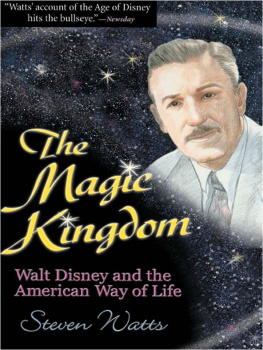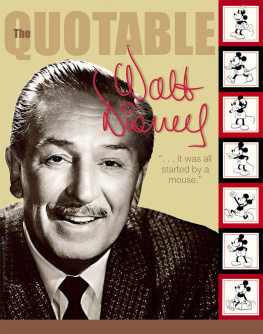
Understanding Disney
THE MANUFACTURE OF FANTASY
Second Edition
JANET WASKO
polity
Copyright page
Copyright Janet Wasko 2020
The right of Janet Wasko to be identified as Author of this Work has been asserted in accordance with the UK Copyright, Designs and Patents Act 1988.
First published in 2001 by Polity Press
This edition published in 2020 by Polity Press
Polity Press
65 Bridge Street
Cambridge CB2 1UR, UK
Polity Press
101 Station Landing
Suite 300
Medford, MA 02155, USA
All rights reserved. Except for the quotation of short passages for the purpose of criticism and review, no part of this publication may be reproduced, stored in a retrieval system or transmitted, in any form or by any means, electronic, mechanical, photocopying, recording or otherwise, without the prior permission of the publisher.
ISBN-13: 978-0-7456-9563-1
ISBN-13: 978-0-7456-9564-8(pb)
A catalogue record for this book is available from the British Library.
Library of Congress Cataloging-in-Publication Data
Names: Wasko, Janet, author.
Title: Understanding Disney : the manufacture of fantasy / Janet Wasko.
Description: Second edition. | Medford, MA : Polity, 2020. | Includes bibliographical references and index. | Summary: Since the 1930s, the Walt Disney Company has produced characters, images, and stories that have captivated audiences around the world. In this updated second edition, with new examples provided throughout, Janet Wasko examines the processes by which the Disney company continues to manufacture the fantasies that enthrall millions-- Provided by publisher.
Identifiers: LCCN 2019024577 (print) | LCCN 2019024578 (ebook) | ISBN 9780745695631 (hardback) | ISBN 9780745695648 (paperback) | ISBN 9780745695679 (epub)
Subjects: LCSH: Walt Disney Company.
Classification: LCC PN1999.W27 W37 2020 (print) | LCC PN1999.W27 (ebook) | DDC 384/.8/06579794--dc23
LC record available at https://lccn.loc.gov/2019024577
LC ebook record available at https://lccn.loc.gov/2019024578
Typeset in 11 on 13pt Dante
by Fakenham Prepress Solutions, Fakenham, Norfolk NR21 8NL
Printed and bound in Great Britain by CPI Group (UK) Ltd, Croydon
The publisher has used its best endeavours to ensure that the URLs for external websites referred to in this book are correct and active at the time of going to press. However, the publisher has no responsibility for the websites and can make no guarantee that a site will remain live or that the content is or will remain appropriate.
Every effort has been made to trace all copyright holders, but if any have been overlooked the publisher will be pleased to include any necessary credits in any subsequent reprint or edition.
For further information on Polity, visit our website: politybooks.com
Preface and Acknowledgments
Growing up in southern California in the 1950s and 1960s meant a good deal of exposure to Disneys world. Disneyland was just up the freeway from where I lived in San Diego, and The Wonderful World of Disney and The Mickey Mouse Club were essential television viewing. For me, as for most American children, more than a few family memories involved Disney, in one way or another. I again dedicate this book to my family, especially to my brother, Jack, whose first girlfriend moved from San Diego to Los Angeles to become one of the minor Mouseketeers, with whom I shared many of these childhood memories, and who found pleasure and delight in trips to Disneys magical worlds.
I also must admit that, once upon a time, I found myself working down on Uncle Walts farm (AKA Disneys studio) in Burbank, California. It was the final in a series of film/television industry jobs that propelled me back to academe to try to understand why the entertainment industry behaved the way it does, and to question its role in society. I now find myself at a university that has a Disney character as a mascot, and I still work on trying to understand media and society.
Many years ago, it seemed like a good idea to offer a course on Disney at the University of Oregon. The course became known by the same title as this book and has covered some of the same territory. Initially, it was an attempt to expand upon a political economic approach to the media, as well as to respond to all those critics who say that political economists are uninterested in texts, audiences, or culture. But it also seemed like it would be a potentially popular course on media and it has been. Over the years, literally hundreds of students have helped to sort through many of the questions posed in the book, offered their thoughts about the Disney phenomenon, as well as shared their own Disney memories (some of which are included in ). My thanks to all of them whether they liked the course or not.
Many other acknowledgments are due. Research assistance was provided by Kris Wright, Adrian Black, Elim Hernandez, Phil Duncan, and Zak Roman. Many thoughtful individuals have forwarded articles, clippings, and email stories (special thanks to Greg Kerber, Brent Cowley, Chris Chavez, and Jeremy Swartz); others have passed along interesting Disney paraphernalia (especially Bill Kunz, Jrg Becker, and Andrew Jakubowicz). Photographs were provided by Andrew Jakubowicz, Rodrigo Gomez, Gabriela Martinez, Graham Murdock, David Gracon, and Ulli Becker. And very special thanks to Wade Larsen and Jeremy Swartz for the cover design.
The people at Polity Press and Blackwell have been (as always) helpful and efficient. Special thanks to Ellen MacDonald-Kramer, Mary Savigar, Andrea Drugan, Elen Griffiths, and Lauren Mulholland for their incredible patience. Also, to Gail Ferguson for careful copy-editing.
And, finally, for years of intellectual stimulation and moral support, thanks to Eileen Meehan, Deborah Phillips, and Jeremy Swartz. And to Joey...
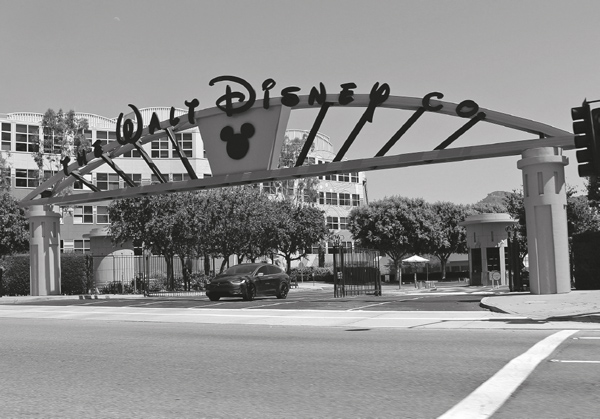
Figure 1.1: The Alameda Avenue entrance to the Walt Disney Studios in Burbank, California. Photo by Coolcaesar.
Introducing the Disney Multiverse
From Mickey to Marvel
Since the early 1930s, the Disney company has manufactured stories, characters, and experiences that have been not only popular but beloved by many around the world. Over the years, Disney films, comics, books, toys, theme parks, and other products have been sources of pleasure for many if not most young American children, who learn and have reinforced ideas and values that may last a lifetime. Many adults have joined their children in these forms of leisure, dutifully introducing them to the same stories, characters, values, and ideals, or revisiting these sites on their own, renewing the pleasure and satisfaction experienced as children. Indeed, Disney holds an almost sacred place in the lives of many Americans.
The Disney company started in the late 1920s as a small entrepreneurial enterprise when Walt Disney and his brother Roy Disney began producing Mickey Mouse cartoons. The company grew gradually, sometimes experiencing financial difficulties but eventually establishing itself as an independent production company in Hollywood. Never one of the major studios (in fact, the company relied on other companies to distribute its film products), the Disney brothers built a reputation for quality animation, utilizing cutting-edge technological developments such as sound and color.
Despite the independent status of the Disney company in Hollywood, the popularity of Disneys products and characters was instantaneous and unmistakable. Indeed, the image of Mickey Mouse was a global phenomenon by the mid-1930s. Thanks to the international distribution of Disney films and the merchandising efforts that accompanied them, the Disney company developed a reputation that was magnified far beyond the relatively small companys resources.
Next page
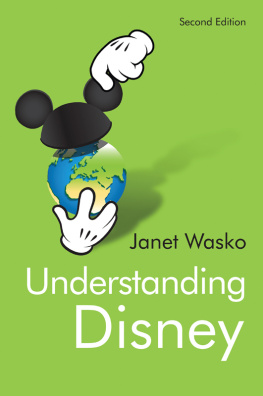
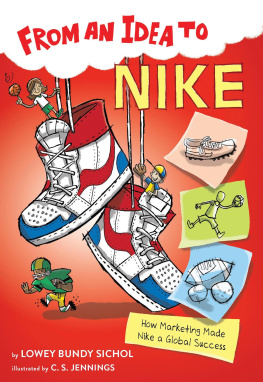
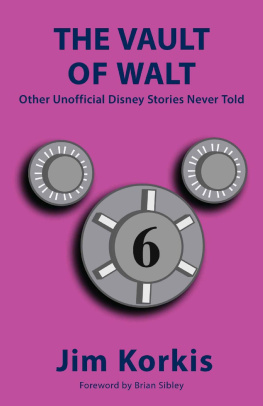
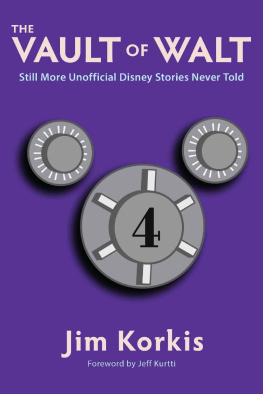
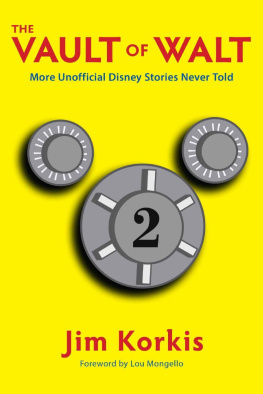



![Laura Lea Miller - Frommers Walt Disney World & Orlando with kids [2010]](/uploads/posts/book/213893/thumbs/laura-lea-miller-frommer-s-walt-disney-world.jpg)
